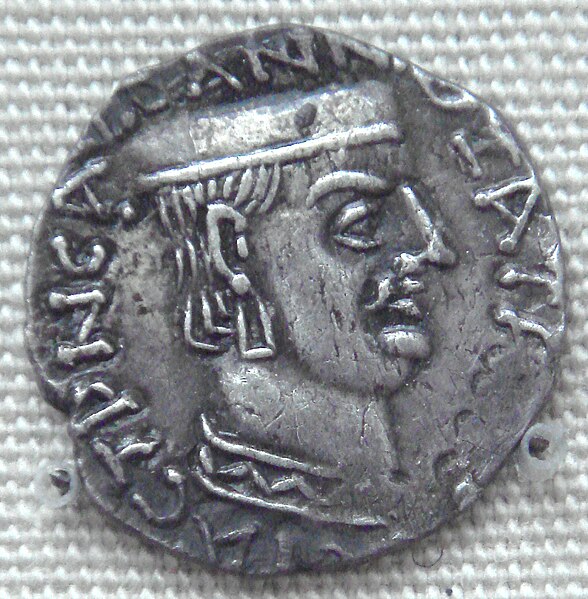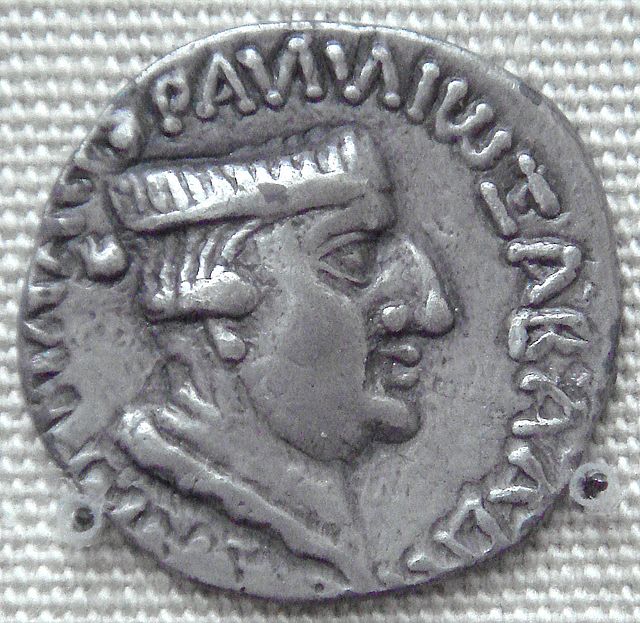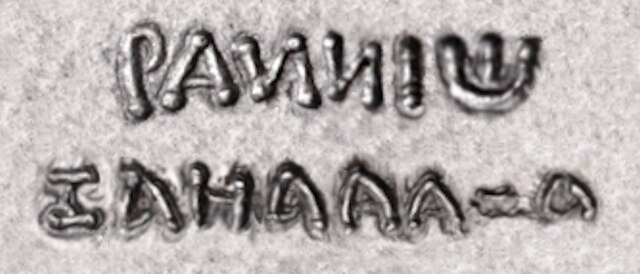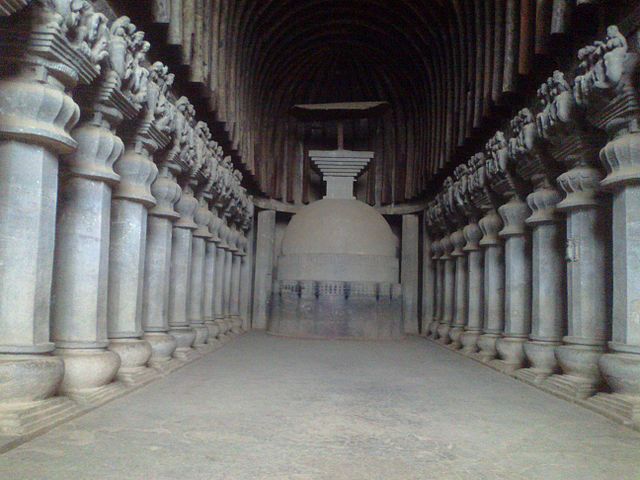Chashtana was a ruler of the Saka Western Satraps in northwestern India during 78-130 CE, when he was the satrap of Ujjain.
Silver coin of Chashtana, with ruler profile and Greek script legend ΡΑΝΝΙω ΙΑΤΡΑΠΑϹ ϹΙΑϹΤΑΝϹΑ. British Museum.
Coin of Chastana, found in Junagadh.
Coinage of Chastana with complete reverse legend in Brahmi, with a repetition of the name of the ruler in Kharoshthi: "Of the Rajah, the Great Satrap, son of Ysamotika, Chashtana Chatḥaṇa"
Image: Inscribed Image of Saka King Chstan Kushan Period Mat ACCN 12 212 Government Museum Mathura 2013 02 24 5904
The Western Satraps, or Western Kshatrapas were Indo-Scythian (Saka) rulers of the western and central parts of India, between 35 and 415 CE. The Western Satraps were contemporaneous with the Kushans who ruled the northern part of the Indian subcontinent, and were possibly vassals of the Kushans. They were also contemporaneous with the Satavahana (Andhra) who ruled in Central India. They are called "Western Satraps" in modern historiography in order to differentiate them from the "Northern Satraps", who ruled in Punjab and Mathura until the 2nd century CE.
Coin of Bhumaka (?–119). Obv: Arrow, pellet, and thunderbolt. Kharoshthi inscription Chaharasada Chatrapasa Bhumakasa: "Ksaharata Satrap Bhumaka". Rev: Capital of a pillar with seated lion with upraised paw, and wheel (dharmachakra). Brahmi inscription: Kshaharatasa Kshatrapasa Bhumakasa.
Coin of Nahapana (whose rule is variously dated to 24-70 CE, 66-71 CE, or 119–124 CE), a direct derivation from Indo-Greek coinage. British Museum.
The Greco-Prakrit title "RANNIO KSAHARATA" ("ΡΑΝΝΙω ΞΑΗΑΡΑΤΑ(Ϲ)", Prakrit for "King Kshaharata" rendered in corrupted Greek letters) on the obverse of the coinage of Nahapana.
Hall of the Great Chaitya Cave at Karla (120 CE)








